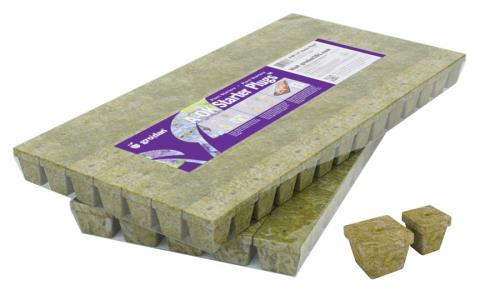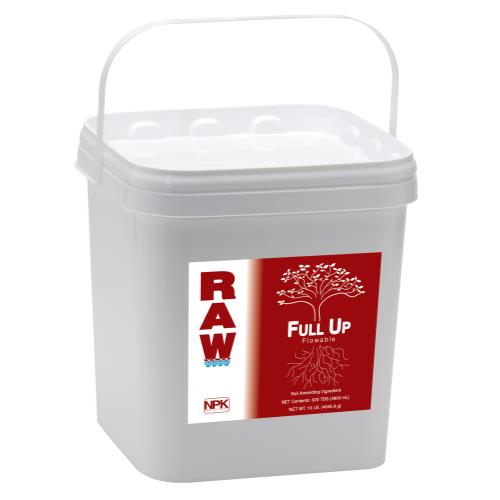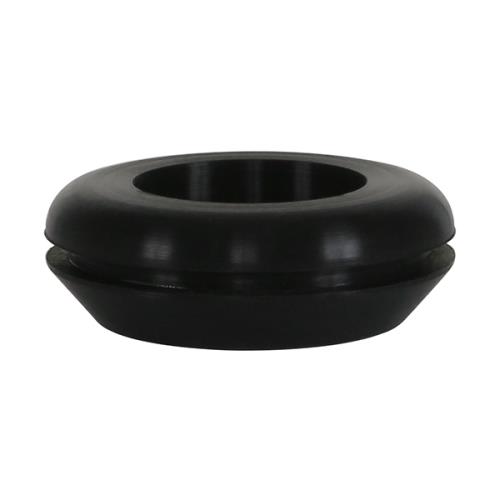Garden Companions
 I was pondering the connections between plants yesterday afternoon while snacking on a pesto and tomato sandwich. We’ve touched on companion plants in our Phytotheca, where each profile contains information about which plants you can keep as neighbors, as well as which need to stay apart!
I was pondering the connections between plants yesterday afternoon while snacking on a pesto and tomato sandwich. We’ve touched on companion plants in our Phytotheca, where each profile contains information about which plants you can keep as neighbors, as well as which need to stay apart! 
Tomato and basil are a classic example of good neighbors. Why, you might ask? Well, the strong scent of the basil leaves is known to repel or confuse pests which might otherwise make a tasty snack out of the tomato plant’s leaves. Also, basil’s flowers attract pollinators which may also be beneficial in the garden in other ways, like eating pesty bugs. There are even rumors that the plants’ root systems interact in a way that makes them both more healthy and productive. Basically, everything is interconnected, and we don’t even always know how or why. But there is plenty of information out there for the gardener who is interested in companion planting.
Companion planting tips
There are a few ways that plants help each other out. First, like the basil above, a plant can either attract good bugs or repel bad bugs and other pests, which not only protects or benefits itself, but also does the same for its neighbors. Plants in the mint family, like basil, as well as mints, oregano, and marjoram, often fall in this category. So are many other strongly scented plants. Onions and garlic, and others in the Allium family, not only repel bad beetles, worms, and bugs, their strong smells can also keep hungry rabbits away. Flowers can also fit in here, like the marigold which repels microscopic nematodes in the soil while it’s alive, and continues to do so even after you till it into the soil at the end of its lifespan. Marigolds also attract beneficial bugs, which are brought into the garden by its brightly colored flowers. These pollinators may also find their way to your squash blossoms and tomato flowers, making sure that fruits and veggies form. Other bugs that are attracted to certain flowers might also like to prey on pesty bugs like aphids. Native plants are a great way to bring in good bugs as well.
Another way plants interact is that they provide shade for each other, or for each others’ roots. Large leaved or spreading herbs keep the soil cool and moist if they’re grown near to taller plants that need a moist or cool environment. Squash leaves are large and often grow low and close together, so they make a good soil shade for hot weather growing. Plants like ginger like a shady environment, which can be found under trees, so don’t leave your trees out when you’re considering a companion planting plan for your yard.
Plants can also support each other. In the three sisters planting method of corn, beans, and squash, corn stalks provide a trellis for the beans to wind their way up. Sunflowers are another good, tall, supportive plant that can become a trellis for climbing vines, as well as attracting pollinators.
Another thing that certain plants in the legume family do is that they take nitrogen from the air and move it into the soil, turning it into a form that is usable by other plants. This soil improvement happens because of a microbial relationship within the roots of these plants. This means that the Rhizobium bacteria that grows in nodes on the roots of the beans needs to be present. If your yard or soil is new to growing beans, you can buy an innoculant that you coat the bean or pea seeds in before planting them. This will ensure that your soil gets its share of nitrogen to be used by the next crop that comes along.
There’s also the idea of a “trap crop,” which is a sort of forfeit to the pests which hopefully keep enough of them occupied that your target crop maintains its health. One example is planting chervil in your garden to attract slugs to it, hopefully meaning they leave your basil and sweet peppers alone!
Read more about companion plants in your favorite gardening book, or talk to an experienced gardener in your life to see if they have any hints. And don’t forget to check the companion plants section in our plant profiles. We’ve got some helpful hints and gardening resources at our store, Culture Garden Market, as well. Happy garden planning!












 What about other species’ interactions with Nepeta cataria? Some studies have shown the potential insect-repelling qualities of essential oils from the herb. Its flowers will also draw in some beneficial pollinating insects like butterflies and bees. And catnip plants will attract predatory insects like lacewings, wasps, and flies that can help to keep your garden free of crop-damaging bugs like caterpillars and leafhoppers.
What about other species’ interactions with Nepeta cataria? Some studies have shown the potential insect-repelling qualities of essential oils from the herb. Its flowers will also draw in some beneficial pollinating insects like butterflies and bees. And catnip plants will attract predatory insects like lacewings, wasps, and flies that can help to keep your garden free of crop-damaging bugs like caterpillars and leafhoppers.  Finally, don’t be surprised if you hear our neighbors from across the pond calling this decorative and strongly scented garden plant catmint or catnep. The names differ, but the plant is the same. Catnip was introduced into North America from Europe, but now thrives here, even growing wild in some places without extra care from gardeners. So, if you think you’ve got a black thumb, catnip might be a good introduction to gardening for you!
Finally, don’t be surprised if you hear our neighbors from across the pond calling this decorative and strongly scented garden plant catmint or catnep. The names differ, but the plant is the same. Catnip was introduced into North America from Europe, but now thrives here, even growing wild in some places without extra care from gardeners. So, if you think you’ve got a black thumb, catnip might be a good introduction to gardening for you!
 Maybe you want to grow
Maybe you want to grow 
 Starting from the most inaccessible portion of your garden and moving towards the most accessible, dig holes where your starts will grow into full, fruit bearing plants this summer. Be sure to check any info on the plants (if bought from a nursery) or check out depth information in our
Starting from the most inaccessible portion of your garden and moving towards the most accessible, dig holes where your starts will grow into full, fruit bearing plants this summer. Be sure to check any info on the plants (if bought from a nursery) or check out depth information in our  After your holes are ready with their little seat, you’re ready to plant. Now, you may have two different types of transplants: ones in plastic growing pots, whose rootballs need a bit of massaging before planting, and ones in compostable pots. The latter are usually plants that don’t transplant well and should be sown directly outdoors. However, not all of us are lucky enough to have long, hot growing seasons (especially me, at 8300′). Plants in compostable pots should be planted, pot and all, directly into the hole, mounding dirt in the sides of the hole until the ground is even.
After your holes are ready with their little seat, you’re ready to plant. Now, you may have two different types of transplants: ones in plastic growing pots, whose rootballs need a bit of massaging before planting, and ones in compostable pots. The latter are usually plants that don’t transplant well and should be sown directly outdoors. However, not all of us are lucky enough to have long, hot growing seasons (especially me, at 8300′). Plants in compostable pots should be planted, pot and all, directly into the hole, mounding dirt in the sides of the hole until the ground is even. Make sure to mark your transplants with a small sign so you can track how different varieties and cultivars fare in your garden! For the frugal gardener, write the names of each type of plant with a marker on popsicle sticks that you can plop into the ground. For a more esthetically-inclined grower, there are many fancy garden signs you can purchase, some with thin metal flags where a plant’s name can be etched into the surface! Either way, it’s great to be able to compile information on each plant to make you a better gardener each year.
Make sure to mark your transplants with a small sign so you can track how different varieties and cultivars fare in your garden! For the frugal gardener, write the names of each type of plant with a marker on popsicle sticks that you can plop into the ground. For a more esthetically-inclined grower, there are many fancy garden signs you can purchase, some with thin metal flags where a plant’s name can be etched into the surface! Either way, it’s great to be able to compile information on each plant to make you a better gardener each year.
 Take a look at the plant profile for each of the plants you are directly sowing into your garden in our
Take a look at the plant profile for each of the plants you are directly sowing into your garden in our 

 Mulch is a necessary, but often overlooked, growing aid for gardeners and can be made of anything from leaves to grass clippings, wood chips, bark, straw, and even plastic chips (however, we recommend NOT using plastic for sustainability reasons). These mulches are added on top of the soil of your garden to help retain moisture, improve fertility of the soil (as they decompose, each adds a different nutrient or nutrients to your garden bed), suppress weeds, and beautify your plot. Mulch can also help protect delicate plants from freak frosts or late cold snaps before a final harvest. Make sure to wait until your seeds begin to sprout before covering them with mulch, since the added layer of darkness may slow or stop germination.
Mulch is a necessary, but often overlooked, growing aid for gardeners and can be made of anything from leaves to grass clippings, wood chips, bark, straw, and even plastic chips (however, we recommend NOT using plastic for sustainability reasons). These mulches are added on top of the soil of your garden to help retain moisture, improve fertility of the soil (as they decompose, each adds a different nutrient or nutrients to your garden bed), suppress weeds, and beautify your plot. Mulch can also help protect delicate plants from freak frosts or late cold snaps before a final harvest. Make sure to wait until your seeds begin to sprout before covering them with mulch, since the added layer of darkness may slow or stop germination. For larger, sprawling plants, such as tomatoes, tomatillos, peppers, grapes, and other fruit-bearing friends, we recommend using a trellis or some type of support to keep heavy fruits off the ground and away from critters. It’s important to insert your trellis or cages at this stage in growing, so that you don’t damage the roots of your plants when they get bigger. This goes for stakes and other support systems as well: adding these later in the season can puncture or sever roots underground.
For larger, sprawling plants, such as tomatoes, tomatillos, peppers, grapes, and other fruit-bearing friends, we recommend using a trellis or some type of support to keep heavy fruits off the ground and away from critters. It’s important to insert your trellis or cages at this stage in growing, so that you don’t damage the roots of your plants when they get bigger. This goes for stakes and other support systems as well: adding these later in the season can puncture or sever roots underground. Keep an eye on your plants as the season begins to turn warm. Everyday, check your transplants for new growth: when you begin to see new leaves sprouting from a node, you can be sure the plant has anchored itself and it on its way to deliciousness. After a few weeks, you should start seeing your seeds sprouting out of the soil. Take note of thinning information in our
Keep an eye on your plants as the season begins to turn warm. Everyday, check your transplants for new growth: when you begin to see new leaves sprouting from a node, you can be sure the plant has anchored itself and it on its way to deliciousness. After a few weeks, you should start seeing your seeds sprouting out of the soil. Take note of thinning information in our 
 Lucky you! You’re in the Goldilocks zone of soil with a nice loamy, rich ground. All you’ve got to do with your site is make sure to get rid of any weeds, and you should be good to go. Some organic weed control options to get you going are sheet mulching (to smother the weeds) or hand pulling (if you’ve only found a few).
Lucky you! You’re in the Goldilocks zone of soil with a nice loamy, rich ground. All you’ve got to do with your site is make sure to get rid of any weeds, and you should be good to go. Some organic weed control options to get you going are sheet mulching (to smother the weeds) or hand pulling (if you’ve only found a few). So if your soil is in need of some love, first you’ll need to determine what it needs. Generally, the addition of organic matter is a good solution for soils that are either too sandy or too clayey. However, each requires a different type of organic matter.
So if your soil is in need of some love, first you’ll need to determine what it needs. Generally, the addition of organic matter is a good solution for soils that are either too sandy or too clayey. However, each requires a different type of organic matter. If you’ve decided to build your own raised beds, you’ll need some materials. We recommend picking sustainably certified wood or using re-purposed materials like you might find at a used building supply store. Here in Boulder, we’ve got
If you’ve decided to build your own raised beds, you’ll need some materials. We recommend picking sustainably certified wood or using re-purposed materials like you might find at a used building supply store. Here in Boulder, we’ve got  Once you’ve picked your container, you’ll need to find a soil blend to fill it with. Look for a complete potting mix that is well drained and contains organic ingredients like topsoil, coco coir, perlite, and/or vermiculite, and make sure your mix contains an organic nutrient source like compost or worm castings.
Once you’ve picked your container, you’ll need to find a soil blend to fill it with. Look for a complete potting mix that is well drained and contains organic ingredients like topsoil, coco coir, perlite, and/or vermiculite, and make sure your mix contains an organic nutrient source like compost or worm castings.

 If you’ve decided to buy starts from a local farm or grower, you can skip this next step! But we recommend trying at least a few seeds indoors on your own for a growing experiment.
If you’ve decided to buy starts from a local farm or grower, you can skip this next step! But we recommend trying at least a few seeds indoors on your own for a growing experiment.
 Another good option to consider is indoor or greenhouse growing if you’re trying to get seeds. If you’re able to protect plants from the cool weather, they should flower and develop seeds in the fall in any climate. As another option, you can grow sprouts or microgreens. Use a moistened well-draining soilless medium like coco coir and scatter seeds on the surface. Water regularly once germination has begun and grow under good lighting to keep these baby plants nice and green. Harvest either once seed leaves have emerged and shed the seed husk, or after the first set of true leaves have appeared, giving them enough light to grow green leaves and prevent leggy, weak stems. Eat your bounty as soon as you can, since they don’t store well.
Another good option to consider is indoor or greenhouse growing if you’re trying to get seeds. If you’re able to protect plants from the cool weather, they should flower and develop seeds in the fall in any climate. As another option, you can grow sprouts or microgreens. Use a moistened well-draining soilless medium like coco coir and scatter seeds on the surface. Water regularly once germination has begun and grow under good lighting to keep these baby plants nice and green. Harvest either once seed leaves have emerged and shed the seed husk, or after the first set of true leaves have appeared, giving them enough light to grow green leaves and prevent leggy, weak stems. Eat your bounty as soon as you can, since they don’t store well.


 Depending on where you live, you can generally make a good guess as to how much natural precipitation you are going to get during the summer.
Depending on where you live, you can generally make a good guess as to how much natural precipitation you are going to get during the summer. will have the freedom to hand pick the soil that you are going to be working with. In order to make the most accurate choices, you will need to select your plants first, so feel free to skip to Step 3.
will have the freedom to hand pick the soil that you are going to be working with. In order to make the most accurate choices, you will need to select your plants first, so feel free to skip to Step 3. 









